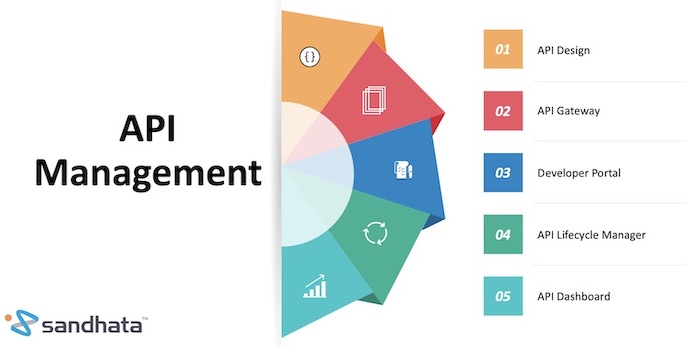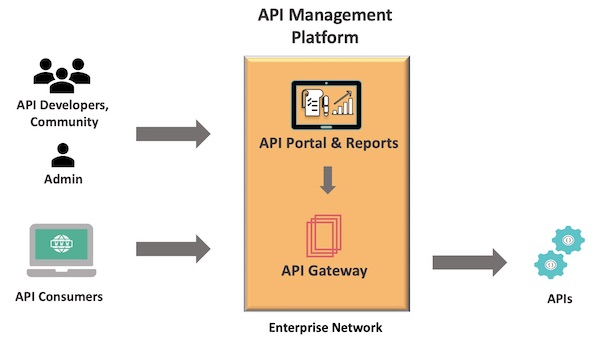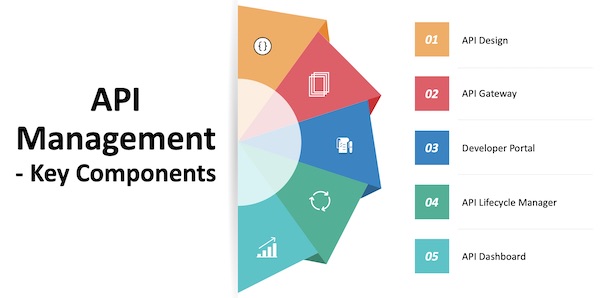Here at Sandhata we spend a large amount of our time doing client consultations, understanding their business and technical challenges and goals across a broad spectrum of business units and technologies.
API management is one such area which is becoming increasingly important to our customers, as they realise the key benefits of a comprehensive API management strategy and implementation.
Traditional API exposure within organisations
Many leading enterprises follow a layered architecture within their Integration Architecture landscape. Creating and exposing reusable APIs for clients has traditionally been the core responsibility of integration departments. This is one way of abstracting downstream systems and reducing any impact to clients in case of any downstream changes.
This works ok for internal API exposure on a small scale, but what about exposing APIs externally, or on a large scale?
Have you ever thought if it’s a good idea to expose an API as-is to consumers?
Though it is technically feasible to expose and API to consumers as-is, there are various vital factors like security guidelines, API usage, metrics analysis and much more which is challenging, or not possible at all with direct API exposure.
In case of small/medium enterprises, direct API exposure may be sufficient and manageable. However, in this competitive digital world for large enterprises, API management is crucial for driving the digital transformation that every business needs.
API management is an additional layer in your layered architecture, providing capabilities including:
- traffic management
- self-service onboarding
- faster time to market
- monetization based on API usage
- security
API management simplifies code and APIs, and provides better business value!
Even legacy APIs can be exposed as a REST / SOAP API to clients by implementing data transformation capabilities available (often out-of-the-box) in the API management layer. This quickly transforms legacy APIs into strategic APIs.
Now, are you interested in getting a quick glimpse of API Management?
Here we go…
API management is the process of creating, publishing, and managing APIs in a secure and scalable environment.
An API management platform offers a centrally visible dashboard where enterprises can share and socialize their APIs while controlling access, collecting usage statistics, and enforcing associated security policies.
API management caters to the complete lifecycle of an API so that the organization can focus on adding value to your core business.
Key Components of API Management
 API Design
API Design
– Enables the user to create, publish and deploy APIs. Additionally, API Design also provides a capability for mock testing the designed API.
 API Gateway
API Gateway
– Sitting between the consumer and one or more APIs it acts as an abstraction layer for the APIs and provides a single point of entry for consumers of the application. The API Gateway is the traffic manager that handles the routing and appropriate data transformation of messages for the API consumers and API.
 API Developer Portal
API Developer Portal
– A self-service hub for developers to gain access to APIs, documentation and other resources needed to consume the APIs. Developers can browse through a unified central API Catalogue to know more about all the public and private APIs available in the organization. Additionally, the API mock testing capability gives insights on the API interface to consumers to improve uptake and productivity.
 API Lifecycle Manager
API Lifecycle Manager
– Covers the lifecycle of an API right from create, manage, secure, socialize, monetize, analyse to retirement.
 API Dashboard
API Dashboard
– It is critical to understand how APIs are being used by consumers to benefit your business. An API Dashboard displays API usage & load across geographic locations, with real-time monitoring capabilities to raise alerts while threshold is reached. This data can be used for monetization purposes.
Key business benefits of API Management
Don’t forget, API management is not just about improving technical capabilities, it is about helping to propel your business to the next level. API Management which is done well can help deliver these business benefits:
- Enables a thriving digital transformation of your business
- Maintains data integrity & security
- Improves customer experiences and customer satisfaction
- A platform to socialize APIs and better time to market
If you are ready to embrace digital transformation, start exploring and choose the right API Management product that will fit your business needs!
Learn more
At Sandhata, our consultants are experts in API management and API monetisation, and we can help you to create the right API strategy for your business.
We can support your microservices adoption to be successful, and help you take advantage of digital transformation. Surviving and thriving in today’s digital economy demands no less.
Contact us to find out more.
Anitha Govindasamy
Latest posts by Anitha Govindasamy (see all)
- Unlocking the Power of APIs: A Beginner’s Guide to API Developer Portal - 16th July 2024
- The Leader of API Gateways: A Deep Dive into Kong - 15th November 2023
- Sandians at Manavata 3H Family Retreat, UK - 23rd June 2023



